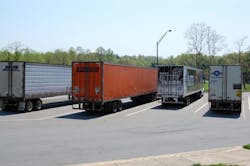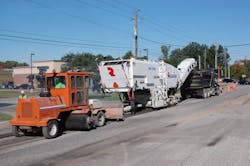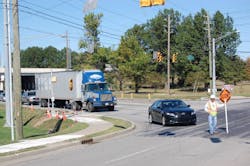As we all know, modern day living relies implicitly on a bevy of motorized vehicles to transport people and goods from place to place. Cars take workers from home to the office/factory/wherever and back again; buses deliver children to and from school; and of course trucks resupply the grocery store and haul away trash, just to name a few of their many services.
Of course, we need to take proper care of said vehicles so they are ready to perform the daily tasks demanded of them. That includes finding a place to park them when not in use – and increasingly problematic issue, especially in our ever-more-crowded urban environments.
[Here’s one potential solution: a fold up all-electric car. Talk about easy to park!]
Hiriko electric car sum-up video Brussels from prosumerlab on Vimeo.
Indeed, there’s a school of thought that believes the overall number parking spaces should be REDUCED in order to force people to use mass transit. That’s happening here in my neck of the woods, as many new government buildings are being deliberately constructed with 30% LESS parking space for the expected number of occupants.
Truckers are also well-experienced in the growing lack of parking out on the highway as many states continue to shut down rest areas as a way to deal with budgetary issues.Now comes a new report from the Mineta Transportation Institute (MTI) called Amenity or Necessity? Street Standards as Parking Policy that investigates the rationale behind what the group claims is a “parking mandate” encased with the minimum residential street width requirements adopted by most U.S. municipalities.
MTI’s researchers conclude that such “street width standards” provide between 740 million and 1.5 billion parking spaces on residential streets almost as a side effect – and an expensive one at that.
According to MTI’s study, local residential streets normally cost between $8.20 and $11.10 per square foot to construct and between 17 cents and 75 cents per square foot to maintain annually.
If a single parking lane is assumed to be eight feet wide, these parking spaces would require between $1 trillion and $21 trillion in capital costs, as well as annual maintenance costs between $20 billion and $177 billion, or between 1% and 11% of annual local government spending in the U.S. – numbers generated in part with the help of U.S. Census 2011 data.
Now, the group cautioned that those numbers are somewhat “artificial” because the 2.8 million miles of US local streets were constructed over the course of many years and because costs differ from year to year. However, MTI’s team believes they still provide a reasonable estimate of the investment scale. In comparison, the total capital and operational spending on public transit in the U.S. in 2009 amounted to “only” $57 billion.MTI explained that its research on this issue is designed to explore two common beliefs underlying this “parking mandate” as the group dubs it: that parking an amenity reflecting market demand, and that it is a technical necessity based on traffic safety concerns.
"A minimum width requirement of 36 feet for a residential street automatically provides two 10-foot traffic lanes and two 8-foot parking lanes, making it a de facto parking policy," explained Zhan Guo, the report’s principle investigator.
“Our study found that local decision makers have an inconsistent and ambiguous understanding of the rationale for mandating this requirement,” he added. “They believe that parking is provided because residents and visitors need it, but in reality it is provided through the minimum width requirement under the guise of technical necessity. This inconsistency calls into question both the amenity and necessity arguments."
In addition, Guo noted, street planning “decision makers” fail to adequately explain the double standard in parking requirements, in which the minimum width is much narrower for private streets than for public streets. Respondents used the same amenity and necessity arguments to explain the requirement differences – which suggests that the parking mandate is likely neither an amenity nor a necessity, he claims.
As a result of its analysis, MTI’s researchers suggest some policy changes. The first is to surface the "submerged" parking mandate by making it a stand-alone policy, so it no longer hides behind the technical street standards and thus avoids public oversight.“Street parking should be addressed separately in development regulations with a detailed analysis of residents' and visitors' demands,” said Guo. “The minimum width requirement should be based on considerations related to traffic movement and access rather than to parking.”
The second suggested policy reform is to eliminate the double standard between public and private streets and make parking optional for residential streets. “These policy initiatives would eliminate excessive parking spaces, mitigate associated externalities, correct market distortions, and avoid shifting risks from local governments to families,” Guo noted.
Now, from where I sit, I think these folks are barking up the wrong tree. You start eliminating parking spaces and all you’re going to get is more congestion, more mess, and more frustration. Furthermore, as we all know, people make a lot of choices based on positive and negative experience. Make a town or city center difficult to park, and many just won’t go there – regardless of public transit availability.
That’s just my opinion of course. We’ll have to see what town managers and elected officials try to do in terms of future parking strategy.






